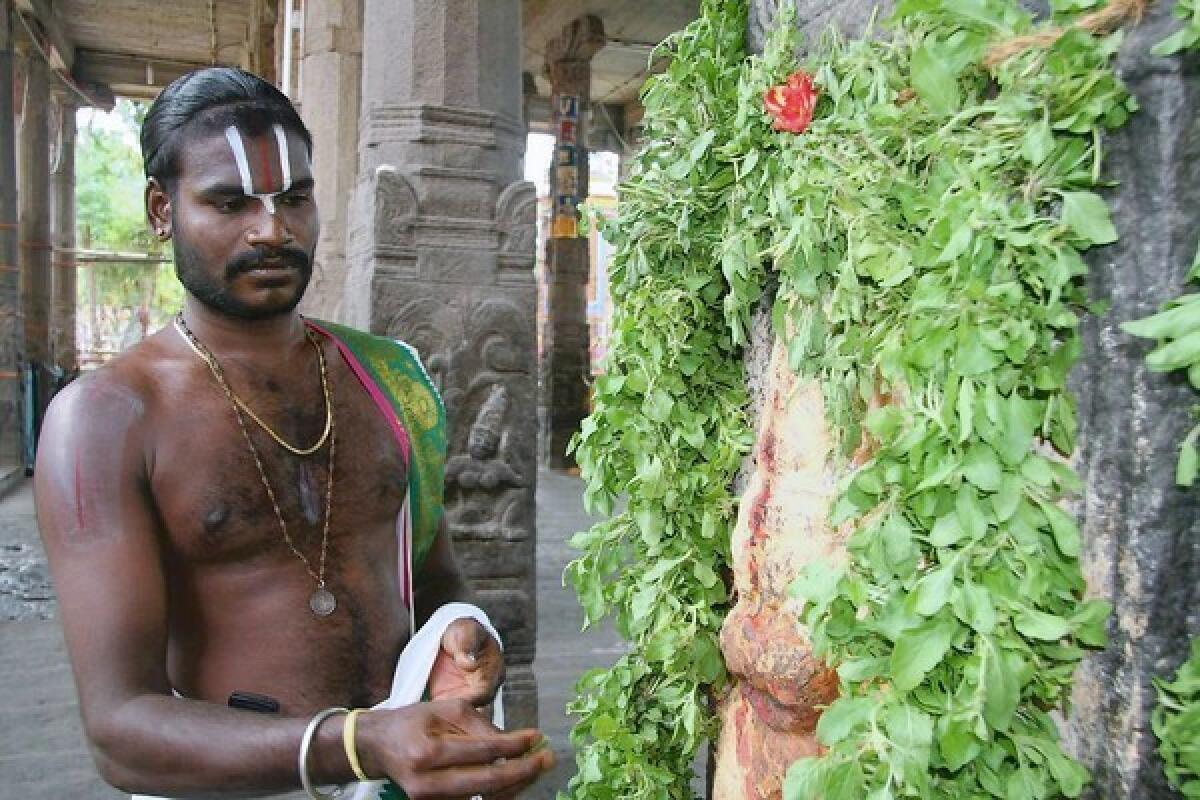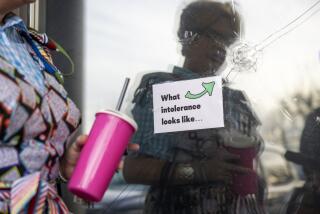In India, trained priests from lower caste still awaiting jobs

CHENNAI, India — Kesavan’s father and grandfather were caretakers who sold candles and performed basic rituals at their local makeshift temple attended by fellow Dalits, or members of the so-called untouchable caste. In India, these structures are omnipresent around sacred trees, on sidewalks, abutting overpasses.
So when the government of southern India’s Tamil Nadu state offered to train Hindus as priests regardless of their caste — a calling traditionally limited to upper-caste Brahmins — he leaped at the opportunity.
Four years after completing the yearlong program, however, he and 206 mostly lower-caste classmates are still waiting for jobs as a lawsuit filed by Brahmin groups wends its way through India’s Supreme Court. While the state owns and runs most temples in Tamil Nadu, the suit says, it has no right to meddle in priest selection or administration. Angry and frustrated, the Dalit trainees say the long delay only underscores Brahmins’ entrenched power in Indian society.
“We’re all doing makeshift work to survive,” said Kesavan, 26, who, like many southern Indians, uses one name. “It’s a tough fight.”
Frustrating their ambitions are Brahmin religious groups, politically minded Hindu nationalists and traditionalists keen to defend one of the last overt structures protecting the 4,000-year-old caste system.
Traditionally, Dalits have occupied the bottom rung of this complex hierarchy. They are viewed as unclean and relegated to jobs such as collecting human waste in a country where two-thirds of households lack a sewer connection. Although outright discrimination in cities has eased in recent decades, with Dalits edging into business and politics, religion has remained largely off limits. And on the social front, customs and prejudice remain entrenched, especially in rural areas.
“The priests are the last vestige, the root of Brahmin power,” said S. Kirupanandasamy, a port executive and lawyer advising the trainees in their struggle for recognition. “We’re not asking them to appoint some thief to the temple. These boys are well-trained and qualified.”
The wannabe priests say they are not trying to take over India’s most famous temples or push Brahmins out. In fact, India has a significant priest shortage amid changing lifestyles that has left thousands of temples of all sorts shuttered. Rather, they just want jobs in some of Tamil Nadu’s 34,000 state-run temples, they say, in keeping with a constitution that outlaws caste and other discrimination.
The real problem isn’t Dalit impurity or tradition, they argue. Rather, it’s that Brahmins don’t want to share money or power.
Officially, priest salaries are modest, often $50 to $150 a month. But earnings from weddings, blessing ceremonies and funerals can be substantial. Top priests also rub shoulders with elite politicians, businessmen and socialites, opening various social and economic doors.
“They arrange deals with VIPs,” said Sathguru, 28, a Dalit who completed the course. “And they don’t want to let others in.”
Further upsetting tradition, the Dalit trainees want mantras and blessings to be said in the local Tamil language rather than ancient Sanskrit, which they believe further safeguards Brahmin power. “Even pious people can’t understand what they’re saying to the gods,” Kirupanandasamy said. “It’s a dead language.”
Brahmin groups, which filed their Supreme Court challenge in 2006 knowing India’s creaky legal system would stall reform for years, counter that allowing lower-caste priests to practice at major temples would tear at India’s religious fabric and impair individual temples’ right to run their own affairs. Although the course was allowed to go ahead, the appointment of Dalit priests has been blocked until the case is resolved.
“Dalits are not impure, but they’re not as pure as Brahmins,” said V. Jagannathan, general secretary of Chennai’s Brahman Thamizhnadu Brahmin Assn., adding that Dalits smoke, drink and wear dirty clothes.
“This is a political drama,” he said. “Priests can’t be government approved; it’s hereditary.”
Trainees believe southern India is an ideal place to challenge the status quo given that the caste system arrived relatively late and the Brahmin population, while influential, is among the smallest in India.
Furthermore, both of the state’s main political parties sprang from an early 1900s anti-religious movement headed by Periyar E.V. Ramasamy, a member of a mid-tier caste who famously told followers: If you see a snake and a Brahmin on the road, kill the Brahmin first.
But politics has also worked against the trainees, with the current state government less enthusiastic than its predecessor, even quietly resistant, when it comes to taking on the Brahmins, making it more likely the issue will languish in court.
Tamil Nadu is no stranger to caste indignities, although it’s probably no worse than in other states. Over the years, Dalits have been attacked and burned alive; Dalit women have been sexually assaulted to “show them their place.” Two years ago, upper-caste residents in two villages strung barbed wire to keep out Dalits.
Kesavan said he was very excited about the state’s certificate course in “Agama Sastras,” or priesthood studies, with its instruction in giving blessings, performing rituals and worshiping the gods.
But bias soon cropped up, he and other Dalit trainees said. Two Brahmin students quit the program, reportedly under pressure from Brahmin friends who considered them traitors, and trainees and their teachers were hit and verbally abused by Brahmins in temples.
Brahmin instructors taught them childish songs instead of core precepts and refused to instruct them in Sanskrit, the key to a priest’s credibility. “The syllabus was dumbed down,” said Kesavan. “They wanted to waste our time, fill our heads with silly information.”
Some Brahmins support their quest, however, including Ramesh Bhattacharya, 40, a priest who mentored trainee Raja Vinnarasu, 26. “If the system isn’t reformed, Brahmins will continue treating Dalits like sweepers,” Bhattacharya said. “India is changing, but Brahmin priests are a last holdout.”
Most Brahmins interested in the priesthood learn through apprenticeships, in some cases supplemented by basic courses. Although a few Dalits have become priests in recent years, most are one-off cases, with this among the most systematic attempts to upend the age-old traditions.
As the years drag on without priesthood jobs, many trainees are doing religious odd jobs or drifting back to farming, working in shops or other low-paying jobs to make ends meet. They remain in close touch, they say, keeping one another’s spirits up. Some have paid for private Sanskrit classes to boost their skills.
They have also held fasts, information exchanges and peaceful protests at large temples to garner public support.
“We get hit, local police harass us,” said V. Ranganathan, 25, who left a high-tech job to join the program. “People say, ‘You’re not eligible. You’re impure. You eat meat,’ which isn’t true. But if we win this case, there will be real freedom in India.”
For Kesavan, who says he has wanted to become a priest his whole life, serving at a big, recognized temple where he can help more people remains his dream.
“The Brahmin priests will never let us in voluntarily,” he said, standing outside Chennai’s Sri Parthasarathy Temple. “But there’s nothing else I can imagine doing with my life. I have to become a priest. For me, there’s no other way.”
Tanvi Sharma of The Times’ New Delhi bureau contributed to this report.
More to Read
Start your day right
Sign up for Essential California for news, features and recommendations from the L.A. Times and beyond in your inbox six days a week.
You may occasionally receive promotional content from the Los Angeles Times.






